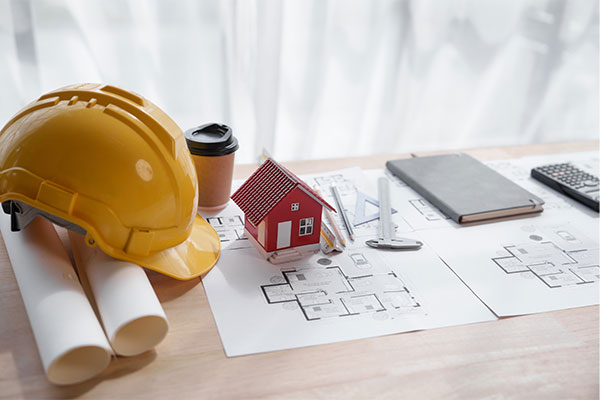The Devastation Unleashed by the Loma Prieta Earthquake is a Reminder of California's Elevated Earthquake Risk
On October 17th, 1989, a segment of the San Andreas fault slipped, causing a magnitude 6.9 earthquake that damaged or destroyed over 20,000 structures, injured 3,757 people, killed 63 people, and caused over $6 billion in damages. When the quake struck at 5:04 p.m. PST during the 1989 World Series at Candlestick Park between the San Francisco Giants and the Oakland Athletics, millions of people around the world were watching the live television coverage. While the game was stopped, TV coverage of the earthquake’s aftermath continued, helping to create much greater awareness of the threat posed by large earthquakes.
This earthquake caused extensive and widespread damage, impacting nearly the entire Bay Area. One of the most devastating scenes unfolded along the Cypress Freeway, on Interstate 880, where the U.S. Department of Transportation reported that “a mile-long section of the freeway’s upper deck began to heave, then collapsed onto the lower roadway, flattening cars as if they were beer cans.” Other areas of extensive damage included major property damage in San Francisco's Marina District.
Every day is earthquake season in California. Loma Prieta may have happened 35 years ago, but the lessons learned from this earthquake are just as relevant today as they were back then. This blog explains some of the most important lessons learned from Loma Prieta, including what you can do to try to help reduce your own earthquake risk.
Shaken Foundations: How the Loma Prieta Earthquake Exposed Vulnerabilities in CA Homes
While the most visible damage resulting from the Loma Prieta earthquake were the collapsed sections of the Cypress Freeway and the Oakland Bay Bridge, this earthquake also helped prove that some California homes are highly susceptible to earthquake damage.
According to the California Department of Conservation, the Loma Prieta earthquake damaged 18,306 houses, destroying 963 of them. California’s Department of Finance reported that the earthquake caused “extensive damage” across five Bay Area Counties: Alameda, San Francisco, San Mateo, Santa Clara and Santa Cruz.
In 1993, the U.S. Geological Survey (USGS) and National Research Council (NRC) convened a Symposium on the Loma Prieta Earthquake to study its impact. The resulting report contained 40 different lessons.
For Californians, two of the most important lessons learned from Loma Prieta included:
- Awareness that “… older residential construction is vulnerable to failure that can cause extreme personal, social, and economic consequences.”
- The fact that “For residential structures, simple retrofits made prior to the earthquake greatly reduced losses.”
We recommend reading the original report in its entirety. Its recommendations may help California homeowners better protect their homes from earthquake damage, including:
- The benefits of hiring “professionals who have demonstrated competence in addressing earthquake hazards”, including practicing designers, engineers, geotechnical professionals, building contractors, building inspectors, etc. to help assess and improve earthquake resilience.
- The importance of reducing “seismic hazards associated with unreinforced masonry buildings in all cities that may be exposed to damaging earthquakes” via earthquake preparedness and mitigation measures, like earthquake retrofits.
- The idea that even “simple and inexpensive [retrofitting] procedures [like] strengthening cripple-walls, bolting residences to their foundations, and anchoring water heaters have a very high benefit/cost ratio.” For more information on the savings available from retrofits and other mitigation techniques, check out FEMA’s “Natural Hazard Mitigation Saves Interim Report" (PDF).
To help you better strengthen your home against earthquake damage, visit our pages covering How to Find a FEMA-trained Retrofit Inspection Professional and How to Hire a Qualified Earthquake Retrofit Contractor.
Policy and Building Code Changes Following Loma Prieta
The damage, destruction and deaths caused by the Loma Prieta earthquake led to significant changes in California’s public policy, including its seismic building codes. Seismic building codes were updated to address safety issues and defects discovered by studying the effects of the earthquake.
California’s seismic codes have been updated several times since Loma Prieta and other major earthquakes, like the 1994 Northridge earthquake and the 2019 Ridgecrest earthquakes. These updates are designed to help make houses and buildings safer, but research into this area is still ongoing. Each time California’s seismic codes are updated, the state introduces stricter guidelines for the rules that must be followed when building a new home or modifying an older house.
For more information about seismic codes and relevant building requirements, be sure to read our Guide to Understanding CA’s Seismic Building Codes.
Key Takeaways for Earthquake Preparedness and Disaster Readiness and Response
CRMP is committed to making California communities more earthquake resilient, and better able to quickly recover from damaging earthquakes.
It is essential to take the threat of earthquakes seriously and to try to protect yourself, your family, and your community by researching your home’s earthquake vulnerabilities, and creating a plan to address them. Visit our "Do I Need a Retrofit?" page for help identifying your home’s earthquake weaknesses so you can improve its earthquake resistance. This page also explains the most common types of earthquake retrofitting techniques, as well as the process for starting your own retrofit project.
Remember that earthquake preparedness can help protect property and save lives, and that the best time to get ready for the next big earthquake is well before the ground begins to shake.
The California Residential Mitigation Program: Helping You Prepare for the Next Big One
CRMP provides more than just information about earthquakes and earthquake retrofits. We also provide grants, financial assistance and incentives to California homeowners who want an earthquake retrofit.
We offer two earthquake retrofit grant programs for qualifying homeowners in high-risk areas, including:
Both of these programs are designed to help Californians reduce their earthquake risks by strengthening their homes with seismic retrofits. If you have any questions about earthquake retrofits, please feel free to Contact Us.
Take Action Today: Steps to Secure Your California Home against Earthquake Damage
All of California’s homes may be vulnerable to earthquakes, but this is especially true of older homes and homes located on or near an active seismic fault. To get started, review our Guide to Earthquake Retrofits, read our blogs on How to Create an Earthquake Emergency Kit, and the 7 Most Important Earthquake Safety Tips.
Visit our Seismic Strong Blog for more tips, advice, and information about earthquakes.




